The original super-team is in the spotlight…
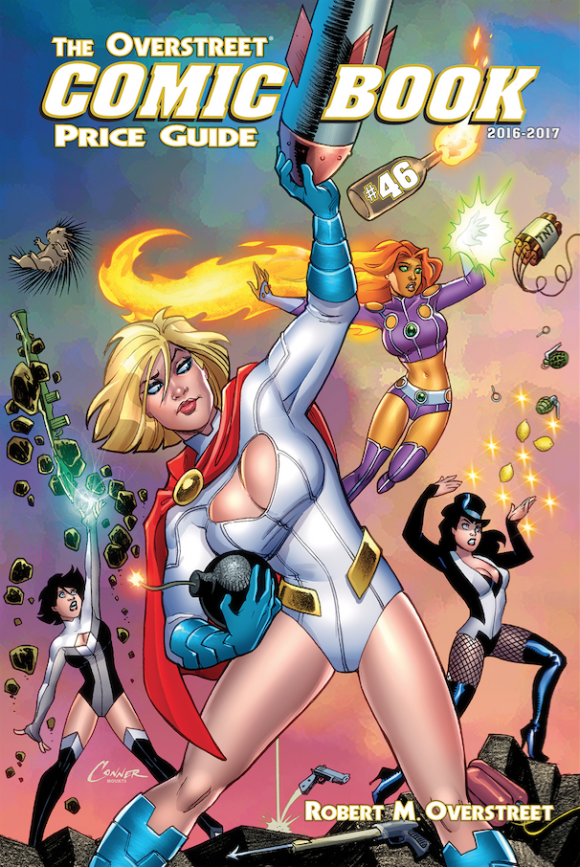
This year’s Overstreet Comic Book Price Guide features, as it typically does, multiple covers. Two of them, though, are by Amanda Conner, a 13th Dimension fave. And one of those puts Power Girl, another 13th Dimension fave, front and center.
PeeGee debuted in All-Star Comics #58 (cover-dated Jan./Feb. 1976), an issue that also marked the Justice Society of America’s revival as a DC headliner.
Our friend Ed Catto has a piece in the Overstreet guide that outlines the JSA’s return to prominence — so we asked him to stop by for a 13 COVERS salute…
—
All-Star Comics #58. It’s hard to believe the JSA started their revival by laying down on the job in this Mike Grell cover. Power Girl debuted in this issues as an alternate version of Supergirl, but she soon would be embraced by fans to occupy a seat at the “adults’ table” for years to come. Also of note: This cover employed an overwhelming variety of fonts to promote the title and the two teams.

—
All-Star Comics #16. In what would become yet another cover that was often paid homage, this spotlight cover by Frank Harry positions the fictional Justice Society along with real-world heroes, the servicemen and servicewomen of World War II.
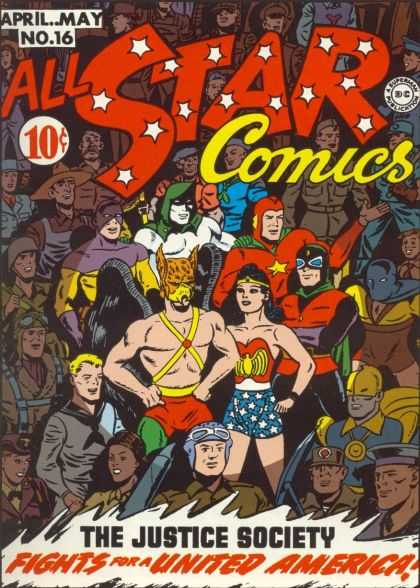
—
Justice League of America #56. You’ve seen this iconic super hero layout so many times, including at the movies in Captain America: Civil War. But it all started here. The Justice League rushes into battle against the Justice Society in this dynamic cover by Carmine Infantino and the legendary Murphy Anderson.
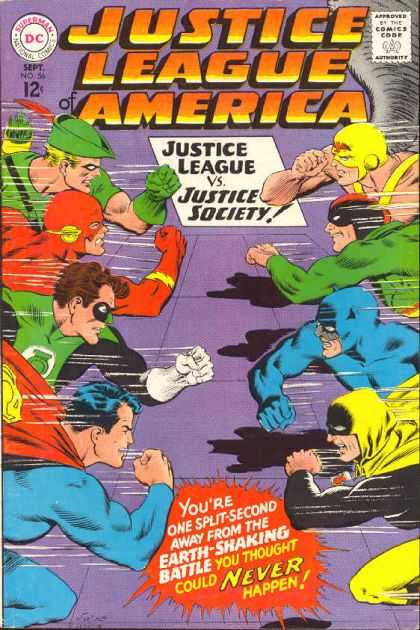
—
All-Star Comics #35. The Justice Society peers through this sands of time, observing their arch foe, Per Degaton. This cover layout by Irwin Hasen, and the hourglass motif, would be also be used by many later artists.
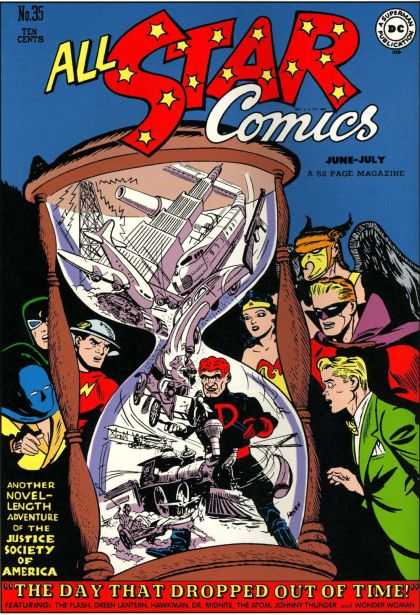
—
JSA #53. Wildcat, like fellow Sensation Comics alumnus Mr. Terrific, became a prominent JSA member in modern times despite his brief time working with the team during the Golden Age. In this clever cover by Carlos Pacheco and Jesus Merino, Wildcat faces off with a new Crimson Avenger. Kudos for the innovative layout with a reflected JSA logo at the bottom of the cover.
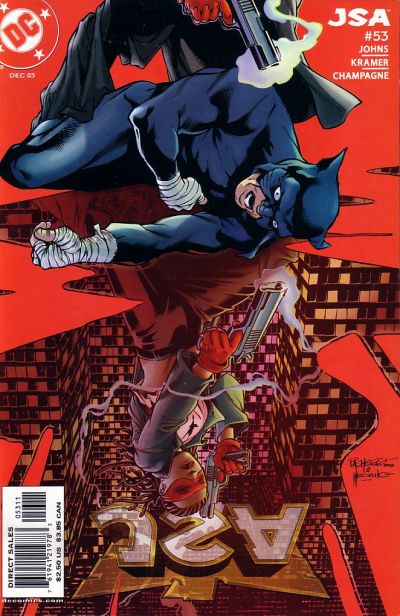
—
All-Star Comics #36. This is my kind of parade. At the time, Superman and Batman weren’t officially full-fledged JSA members, but fans got the idea that they stopped by for parties and parades once in a while.
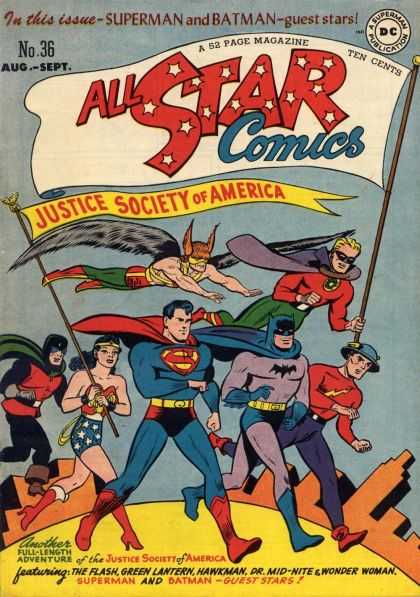
By Hasen and other artists
—
All-Star Comics #64. This gorgeous Wally Wood cover combines all his favorites — Golden Age heroes, pretty blondes and even a Hal Foster-esque setting to create an epic JSA battle scene.
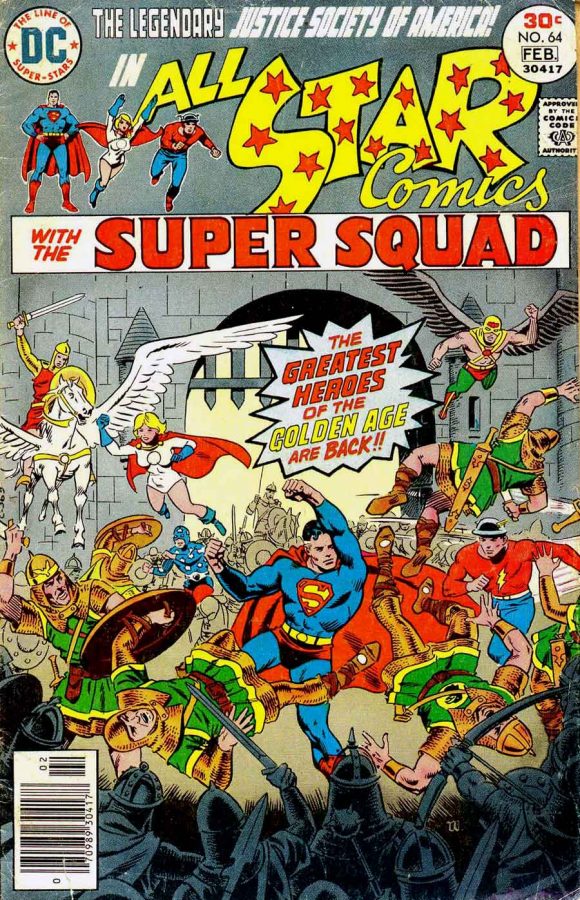
—
Comics Journal #39. Joe Staton, who took over the artistic duties of the ’70s revival from Wally Wood, showcased the Justice Society’s two newest members — Power Girl and the Huntress — in this impressive cover.
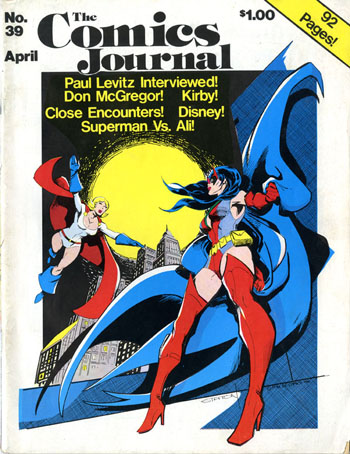
—
All-Star Squadron #1. Another cover concept that is frequently revisited, the debut issue of All-Star Squadron shows JSA Chairman Hawkman, along with the Atom and Dr. Mid-Nite, evaluating potential candidates for a special wartime version of the team.
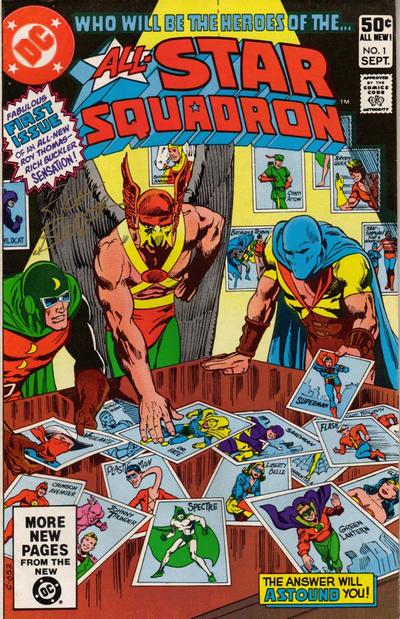
Rich Buckler and Dick Girodano
—
Justice Society TPB. Brian Bolland’s exciting cover for a reprint collection brings to life the sense of upbeat urgency and frenetic fun that creators like Levitz, Conway, Wood and Staton had imbued in the 70’s revival.
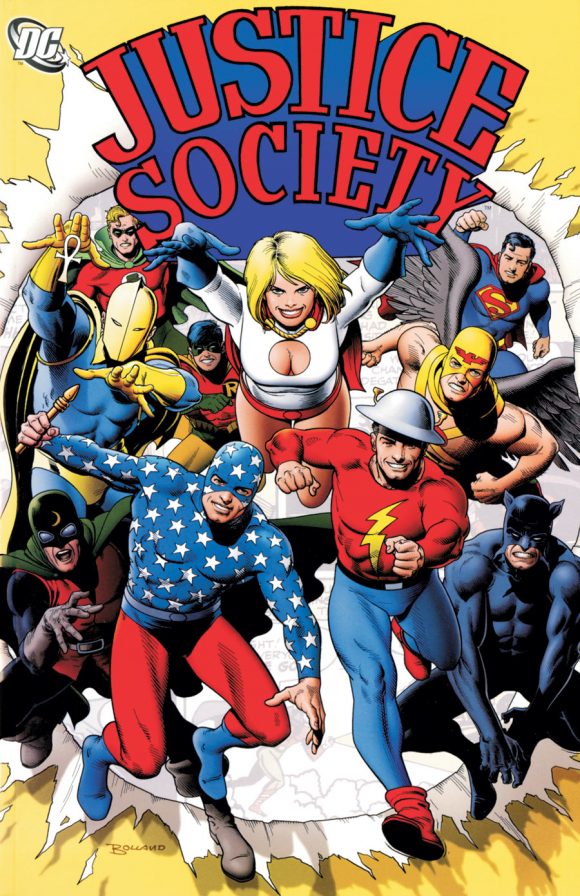
—
Comic Cavalcade #2. Although this title published solo adventures of Justice Society members, fans could see that the JSA was made up of friends who enjoyed one another’s company and were always willing to roll up their sleeves and help in any way they could. Here, as explained years later by Roy Thomas, the JSA was performing to help promote the sale of War Bonds.
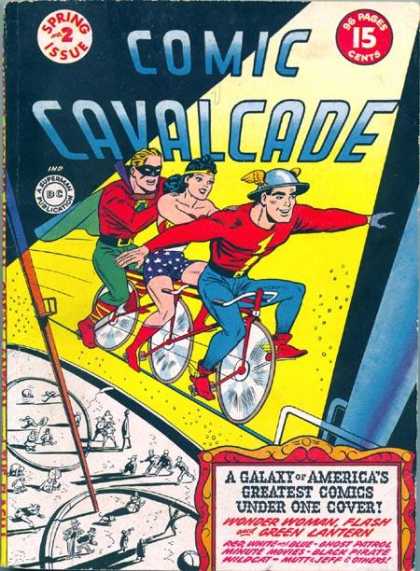
Frank Harry
—
America vs. The Justice Society #3. It’s hard to pick just one JSA cover from master artist Jerry Ordway, but this one, from the America vs. The Justice Society miniseries, exemplifies his clear character renditions, powerful action poses, and bold creativity as he always pushes the boundaries. Here, the unique color hold makes the foreground pop and provides a sinister, more complicated background, (literally and figuratively) to the battle at hand.
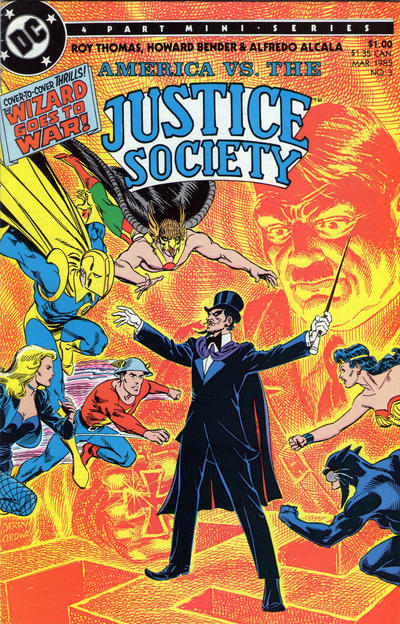
—
All-Star Comics #3. Although many of these characters had appeared in the first two issues of All-Star Comics, this was the iconic issue that brought the heroes together in one adventure. The term “shared universe” wouldn’t be coined for a long time, but as you can see from this cover, this combines the Knights of the Round Table idea with a civic-minded Board of Directors concept.
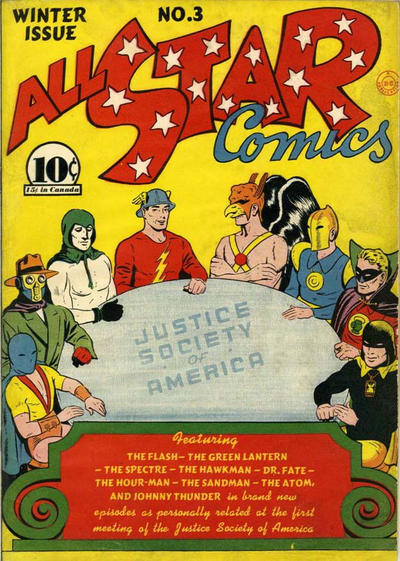
Everett E. Hibbard
—
All scans and credits courtesy of the all-for-one-and-one-for-all Grand Comics Database.
—
